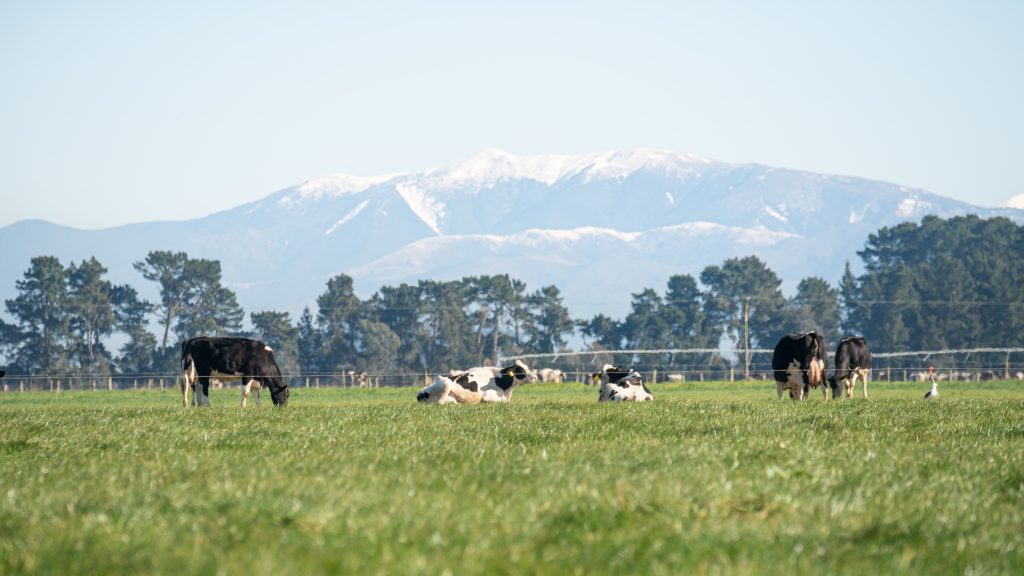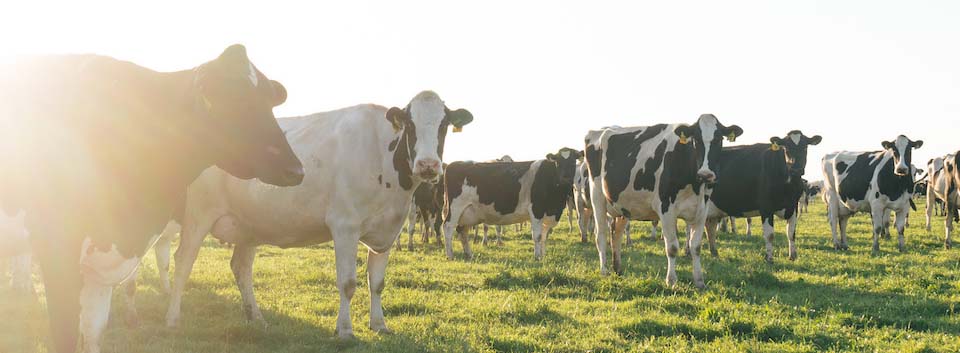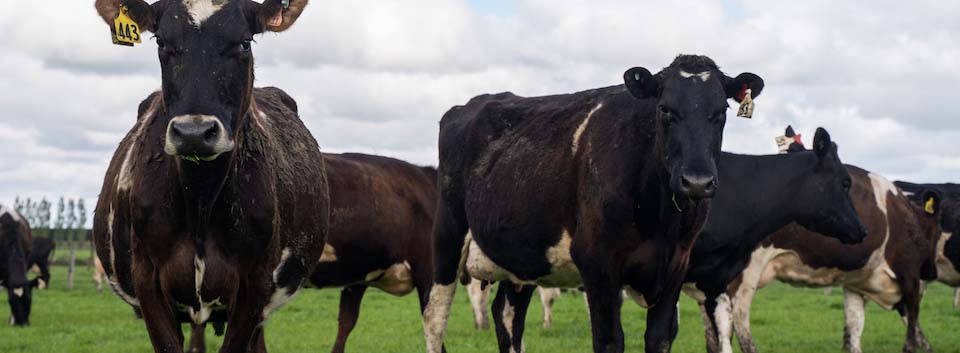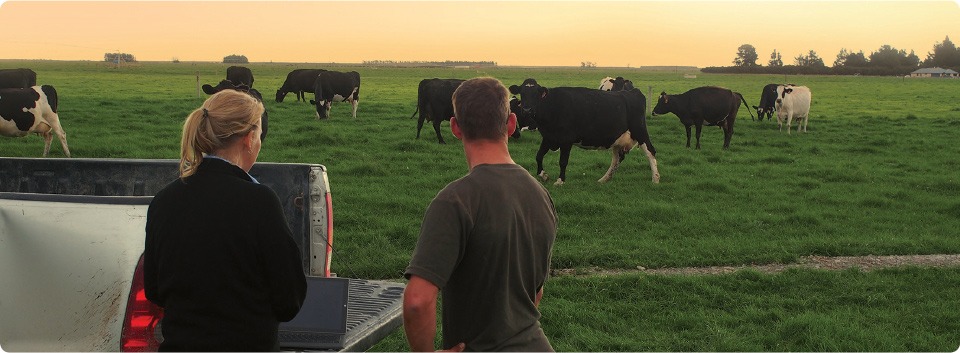Sections in this article:
Exploring the metabolic process and factors leading to ketosis
Serious impacts of subclinical ketosis
Prevalence of subclinical ketosis in NZ dairy herds
Symptoms of subclinical ketosis
Strategies around prevention
Role of macro minerals and trace elements in prevention
The liver – the key to energy
How can we support our farmers?
Subclinical ketosis (SCK), though often unnoticed, poses a significant threat to the health and productivity of New Zealand’s dairy cows. In this article, we discuss the causes, symptoms, and prevention strategies for subclinical ketosis, highlighting the critical role of proper nutrition, liver health, and how we can support our farmers to ensure healthy and productive herds.
Exploring the metabolic process and factors leading to ketosis
The primary cause of subclinical ketosis is inadequate energy intake relative to energy demand, leading to excessive mobilisation of body fat reserves. Let’s explore this further.
Due to the very negative outcomes associated with ketosis in dairy cattle, it is tempting for vets and farmers to view ketosis purely as a ‘disease’, rather than the more accurate description of the problem: a well-tuned metabolic process that becomes problematic when the liver is pushed past capacity.

The body’s energy storage system is a finely-tuned mechanism designed to store energy during periods of abundance (when food is plentiful) and release that energy during times of need (when food is lacking). However, these metabolic processes do not always function optimally when food is abundant, and periods of need are not solely caused by a shortage of food. More often, need arises from a combination of factors that require a high rate of energy expenditure over a short period, such as:
- Disease pressure
- Calving
- High peak milk production, etc.
These sudden stress events can deplete energy reserves rapidly, and the complex process of converting stored fat back into available energy may not be sufficient to meet the heightened energy demands.
When the process occurs naturally and cows are provided with a properly formulated diet during the early lactation period, most will gradually shed some of the condition gained during the previous season, releasing this fat as ketones to fuel production.
Conversely, if a cow is under extreme stress and her diet lacks sufficient energy, she may begin to lose condition at an accelerated rate. In such cases, fat is converted to ketones at an increasingly rapid pace, placing significant strain on the liver to process the excess ketones. This condition can occur at a subclinical level, and if it progresses to a clinical stage, the cow risks exhausting her energy reserves, potentially leading to collapse and even death.
At this point, a natural metabolic process can mimic a disease and may result in several severe conditions if not treated aggressively.
Serious impacts of subclinical ketosis
Subclinical ketosis, although often unnoticed, poses a significant threat to the health and productivity of New Zealand’s dairy cows. Despite its subtle presentation, SCK can have severe implications for both individual cows and the herd as a whole. When ketosis is not well-managed, it can lead to nearly every problem encountered on a dairy farm. These include:
- Reduced milk yield, with affected cows producing up to 7% less milk compared to healthy counterparts, according to the University of Florida
- Fertility and reproductive issues, such as poor conception rates, fetal absorption (resulting in late-season empty cows), and anoestrus
- Increased incidence of metabolic diseases, such as fatty liver disease
- Low immunity, which can lead to various diseases such as mastitis, metritis, and a host of other communicable diseases.
Prevalence of subclinical ketosis in NZ dairy herds
Subclinical ketosis commonly occurs in early lactation, typically within the first few weeks post-calving, with the highest rate observed in the first two weeks, when cows experience a negative energy balance.
This condition is alarmingly prevalent among dairy cows in New Zealand, with DairyNZ’s 2016 study finding an average of 75% of cows in the sample herds experienced moderate hyperketonaemia ketosis (a diagnostic of subclinical ketosis) at least once in the in the first five weeks of calving. Another study by Compton et al in 2014 found a 14.3% mean herd-level prevalence of subclinical ketosis, with a range of 0-60% at 7-12 days post calving.
Symptoms of subclinical ketosis
While subclinical ketosis lacks overt clinical signs, several subtle symptoms may indicate its presence, including:
- Decreased dry matter intake
- Lethargy and reduced activity
- Mild to moderate weight loss or failure to regain lost body weight post-calving
- A distinctive sweet or fruity odour on the breath due to acetone accumulation.
Strategies around prevention
Good planning is the best strategy. Farmers should continuously consider the risk of ketosis and factor this into the dietary and feeding plans of their herds.
The autumn period can be critical and farmers need to ensure their cows are well-conditioned before dry-off. Healthy fat accumulation toward the end of the previous season is important, as general cow condition during lactation – characterised by healthy fat accumulation – can be a vital resource at calving time and during early lactation in the next season.
However, fat accumulation during the dry period often presents a problem. During this period, many of the energy pathways are partially inactive, leading to fat accumulation in or around the organs, particularly the liver. This accumulation can become a significant issue when the cow experiences stress, as the fat can clog the liver – the very organ crucial for producing the energy needed to meet the shortfall.
Maintaining efficient rumen function is essential for meeting the cow’s energy requirements. When the rumen does not digest feed efficiently, the cow cannot meet its energy demands. To ensure optimal rumen function, it is necessary to maintain a stable pH level to support healthy microbial activity. Adequate fibre levels can aid in this process, especially when dietary energy is high. Additionally, rumen stabilisers and live yeasts can be beneficial in supporting the rumen during these times.
Role of macro minerals and trace elements in prevention
Proper nutrition plays a crucial role in preventing subclinical ketosis, emphasising the importance of balanced diets rich in essential macro minerals and trace elements. Adequate phosphorous in the diet is key to energy production, and calcium and magnesium are crucial in maintaining normal metabolic function and preventing ketosis. Ensuring adequate levels of these minerals in pre- and post-calving diets is essential.
Potassium supplementation is seldom a consideration under New Zealand conditions – if pasture makes up part of the diet then potassium is normally adequate. In fact, it is more often the major complicating factor as eliminating the excess is a draw on energy. Sodium can be very important as it plays a large part in regulating the rumen, and energy flows from the rumen. Salt supplementation needs to be carefully calculated based around the diet and total intake.
Trace elements such as chromium, selenium, iodine, and cobalt, play vital roles in glucose metabolism and antioxidant defence mechanisms, contributing to overall metabolic health and resilience against ketosis. Regular monitoring of blood ketone levels and implementing timely dietary adjustments based on nutritional analysis can aid in early detection and management of subclinical ketosis.
The liver – the key to energy
No discussion on ketosis would be complete without emphasising the crucial role of the liver. Maintaining the health and capacity of the liver is essential in effectively addressing ketosis. Farmers can reduce the severity or incidence of ketosis in their herds by increasing the liver’s capacity to process adipose tissue. This is best achieved by:
- Ensuring minimal condition gain over the dry period
- Managing transition diet efficiency (correct NDF, energy, protein, and diet volume)
- Completing the full 21-day transition length
- Formulating the correct mineral balance
- Maintaining rumen stability
- Minimising stress
Most of what we have discussed earlier in this article, such as feed, energy, and minerals, will only remediate the condition once they reach the liver and the energy is converted to a form that can be used at the cell level. Many of the trace elements are fundamental in producing the hormones that drive optimal liver function and, most importantly, regenerate and replace liver cells.
The liver has the highest cell turnover rate of any organ in the body, underscoring its capacity for renewal and its central role in managing ketosis.
How can we support our farmers?
Educating dairy farmers about what subclinical ketosis is, the risks it presents, and how to recognise it are the first steps to combatting this problem. By ensuring a wider understanding of the prevalence and impacts of SCK, we can support our farmers to better cow health, production, and reproductive success.
In New Zealand, mineral supplementation throughout transition is key to ensuring springers have adequate levels of phosphorous, calcium, magnesium, and sodium, in order to handle the metabolic demands of calving and early lactation.
In this regard, Agvance’s transition premixes are a complete mineral blend, however we recommend Customizer for herds that require an added level of customisation. With Customizer, vets are able to upload bloods and liver results and herbage analyses to create a specific supplementation formula.
Subclinical ketosis represents a significant challenge for New Zealand’s dairy industry, compromising cow health, productivity, and economic viability. Recognising the prevalence and seriousness of this metabolic disorder is key to implementing proactive management strategies aimed at prevention and early intervention. By prioritising proper nutrition, including the optimisation of macro minerals and trace elements, vets, nutritionists, and dairy farmers can work together to mitigate the risk of subclinical ketosis and maximise herd potential.
Sources




